Amazing wildlife images can be found in your own back garden! Tom Mason explains how best to photograph robins and garden birds in winter
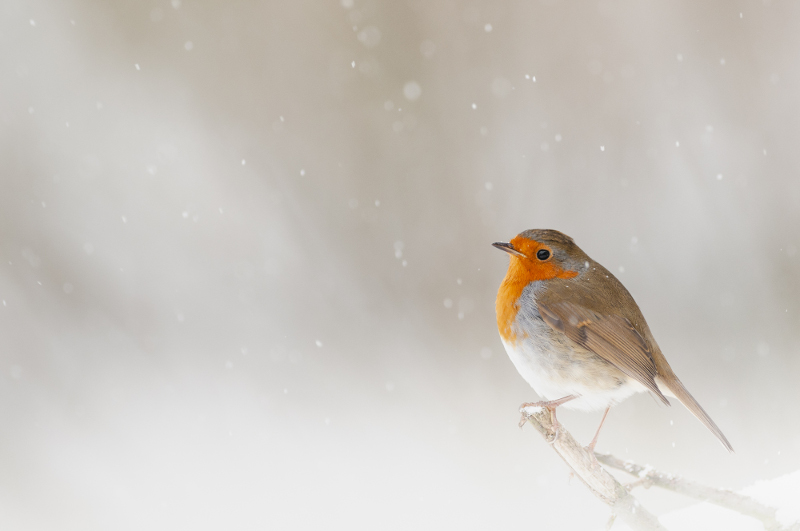
All images by Tom Mason
When it comes to wildlife photography, I’m always telling people that the back garden is one of the best places to start. In the winter the garden can be full of opportunities for working with small birds, from the classic robin to even some of the rarer species. Garden spaces are a haven for the wildlife photographer.
Behaviour
One of the keys to getting better images as a wildlife photographer is understanding the behaviour of the subjects you’re working with. In the winter small birds often seem easier to photograph and this is down to a number of key reasons.
First and most notably: food. It's no surprise that as the weather gets colder and the abundance of insects from the summer dies down, food availability for small birds reduces, often pushing them to venture to new locations looking for supplementary sources.
Within the winter periods you’ll often find more birds flocking together looking for food, not only as single species but in mixed groups. This added tolerance for other species is a great benefit for the photographer, as when the birds do turn up in position, you might get the chance to photograph a range of subjects rather than just a single one at a time.
As well as this tolerance of other birds, I have often found that due to their increased need to feed, their acceptance of human activity is also relaxed. This allows for better opportunities to get closer to smaller birds while they are actively feeding or searching out a meal.
In addition to the active food search, another reason for the enhanced bird activity in winter in the UK is the migration. Often when the colder weather hits other parts of northern Europe, birds will move across to winter on our shores due to the milder climate, again increasing the abundance of individual birds we see. It’s a common perception that we have more robins in the winter… and that’s because, well, we do!
Setting up the shots
Using the above idea that most birds are looking for food in the winter, working with a feeder setup is often the easiest and most practical way of making great images in the garden. One of the best ways to do this is with a moveable garden stake that feeders can be hung from. The feeders will attract the birds, however, ugly metal or plastic infrastructure rarely make great images, so to enhance the aesthetic, head out and find a couple of choice twigs or branches to make a realistic set.
A good guideline for this is to think that the width of the twig should be roughly that of the bird’s feet, as you’ll notice in the wild, rarely do small birds perch on wide branches! Often for small birds like robins or those from the tit families, twigs with a width of half a centimetre work well. You’ll want to attach these to the feeder pole; often I find reusable cable ties an effective way to do this, as you can adjust and change the stick with ease.
Once you have your sticks in place, you’ll want to also check the location and position of your moveable set. Viewing from your camera position, pay attention to the background – if there are any distracting elements you wish to remove, doing it ahead of time is key, because once you’ve started shooting you don’t want to have to scare your subjects off to go and remove that yellow plant pot that’s killing the background!
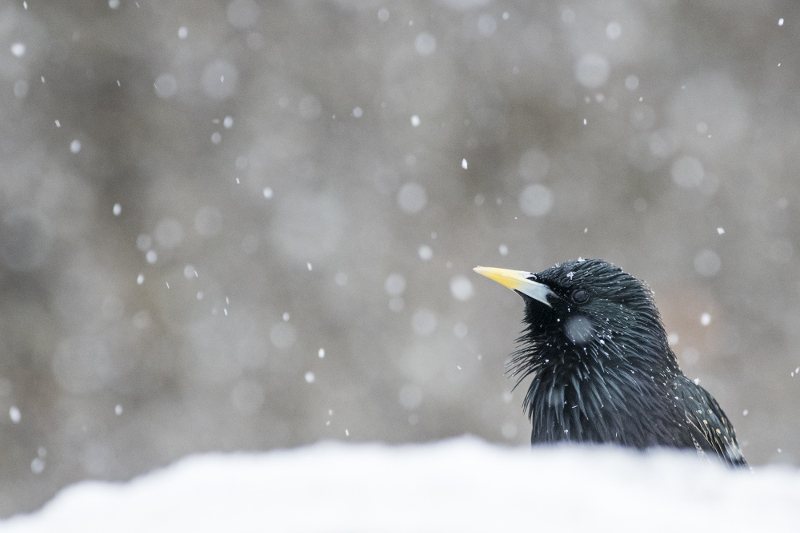
In addition to looking for glaring elements in the background, it’s also good to keep in mind the working distances for ideal bokeh behind the subject. A simple rule I’ve come to work with is that my background should always be at least three times the working distance I am from my subject; so for example if my feeder is a metre away, I want three metres behind me at 300mm f/5.6 for a smooth, clean background.
Now, of course, because we are working in the garden, long lenses don’t have to be the only approach for our images. A camera with a wider lens, or even a short telephoto, can be used to great effect when paired with a remote release. Radio versions work most effectively, and in the garden can be used to make some great “in the environment” shots for those who may not yet have invested in a long telephoto.
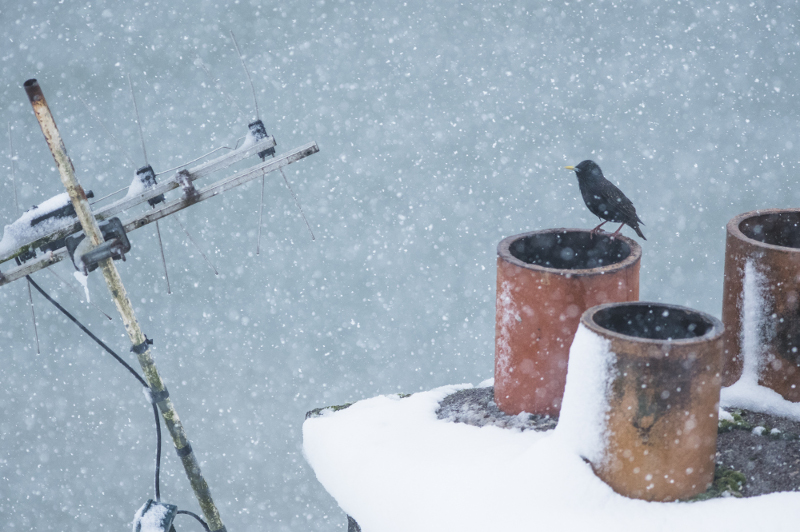
With regard to your fieldcraft, keeping yourself concealed is the easiest way to ensure your subjects are more forthcoming. Working from a hide, be it a bag-style hide or a tent, can be effective, however because you are close to home, working from the backdoor or a window may be more effective, practical and appealing. You’ll have easier access to the kettle when the birds aren’t in view, as well as the benefits of the central heating!
When the birds do start to show, don’t fire off a huge number of frames, take your time and simply shoot a couple and watch the reaction of your subjects. Often they will be wary of new feeders to start with so it might be worth topping the food up for a week or so before you settle in for your first shoot, giving the birds time to get used to the new location.
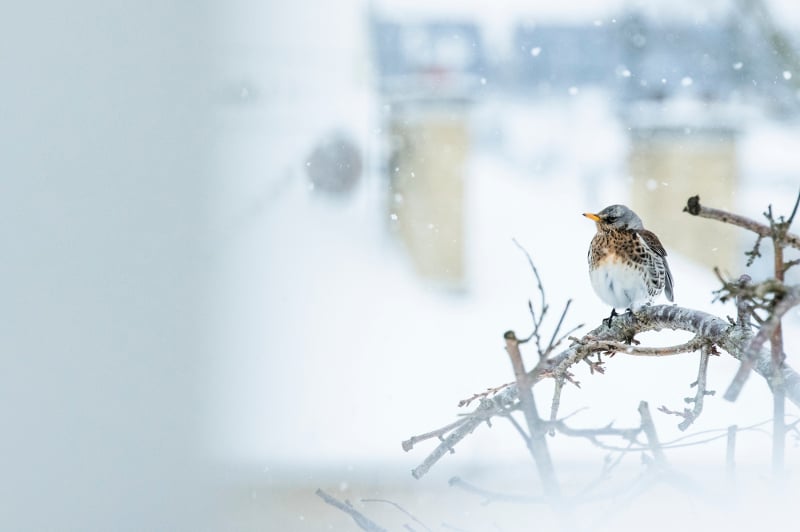
Weather conditions
One of the best things about working so close to home is the ability to react to the changing weather conditions. In the UK, (well, especially in the south) snow isn’t always the most predictable of photographic opportunities, so being ready for it is key! Keep a close eye on the weather, and if it ever looks promising, be sure to get out and top up the feeders the night before. You’ll kick yourself if you don’t!
Then make sure the stage is set. You won’t want to do too much tampering or adjusting in the morning as it’s easy to knock off any snow that’s lightly affixed to your well-placed perches if you’re not careful, so double-check everything is looking good from your shooting position. If it all does come together, hopefully you’ll be ready to make the most of the conditions, with birds showing up for a bite to eat in the fresh snowfall.
Snow needs to be white in images, so when exposing, be sure to use your histogram and push to the right. It’s best to overexpose slightly to ensure the snow is truly white and not grey – generally around +2/3 is enough. When working in the snow, be sure to also try for some high-key images, striving for white foregrounds and backgrounds for the classic winter portrait. Robins work perfectly for this, as the red breast contrasts perfectly with the pure white surroundings. A great way to set these up is to throw a few mealworms out on the snow and then get a low angle to conceal them from view, waiting for your subjects to show.
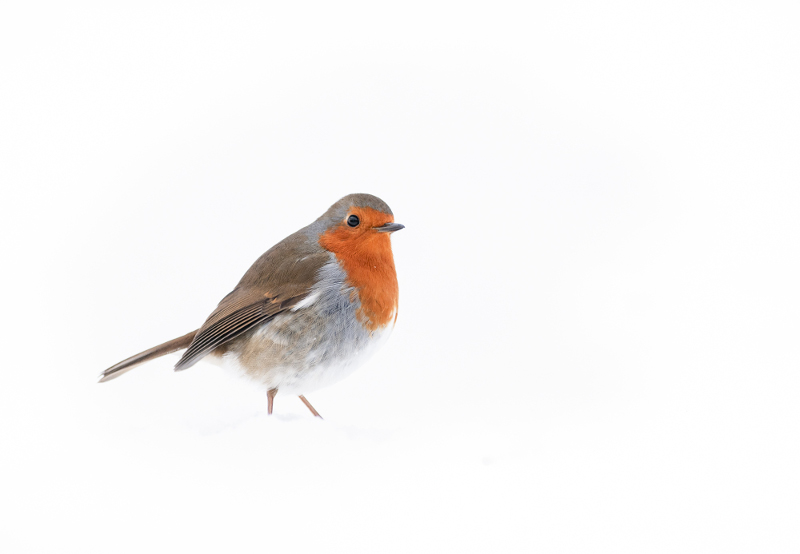
Composition
When it comes to composition, often we want to give our wild subjects a little room. Filling the frame can be great, but in order to give the subject more of a sense of wildness, having them look into some negative space can often make a more successful composition. When working with extra elements like snowfall, taking a wider view and putting your subject small in the frame can really help to enhance the feeling of cold and isolation, as well as showing off the winter conditions.
In addition, think about other elements in the garden environment. Framing up subjects with houses in the background or on rooftops can work really well, giving an urban feel to shots. Due to the accessibility of your subjects, don’t just shoot the same frames over and over; try for a couple of different images each week or session to build up a portfolio.
Responsible shooting
As with all wildlife photography, being responsible within your shooting is of the utmost importance. Even though it may seem that working with garden birds is easy, it is still necessary to take the time to ensure our impact is minimal.
One of the biggest concerns comes from the addition of feeders. If you start feeding in order to create some images, please don’t just go cold turkey on the birds after you’ve finished your shoot. Keep the feeders stocked up for the whole winter period, especially in the worst weather, as they may have come to rely on the extra food source for survival, and it’s the least you can do for the fantastic photographic opportunities!
Hopefully the above will give you a few ideas for getting out and working on a local garden bird photography project this winter and help you to nail that perfect image of a robin in the snow! If you have any questions, don’t be shy – drop me a tweet @tommasonphoto and be sure to submit a few of your images in the weekly #WexMondays competition!
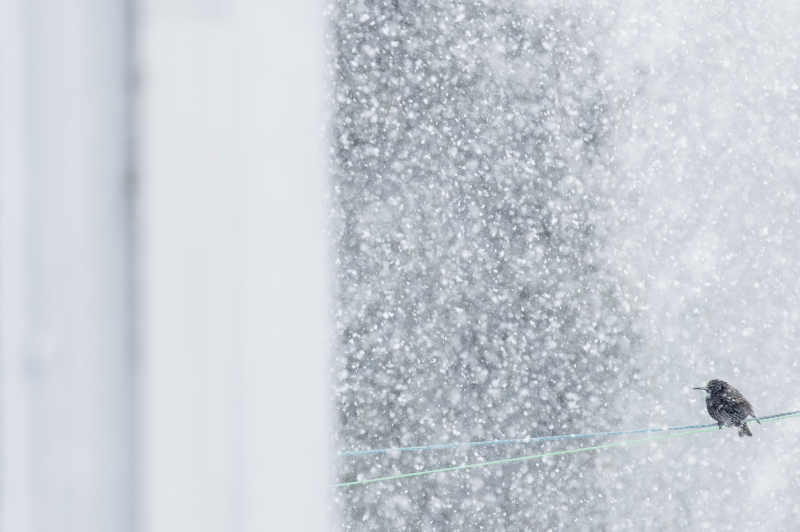
Five top tips
1. For small birds like robins, due to their consistent movement, a fast shutter speed of 1/1500 sec or more is recommended to ensure you freeze the action.
2. When working in snow, be sure to overexpose to ensure your whites stay white; often +2/3 is a good place to start.
3. If you want to tempt birds onto the ground, think about sinking a film canister full of mealworms into the lawn to encourage birds close whilst keeping it out of view.
4. When using a long lens fixed on a known perch, often a wired remote release can help reduce unneeded movement that can scare away subjects, as well as reduce camera shake for sharper images.
5. For a neat white foreground, shooting across a snowy windowsill can make the perfect out-of-focus element to enhance your shots without needing to get covered in snow!
About the Author
Tom Mason is a wildlife photographer and journalist, and is also the host of our Life in the Wild series. Keep up with him on Twitter, @TomMasonPhoto, or visit his website for more.
Related articles
Photographing red squirrels in autumn | Top tips for unforgettable shots
Photograph wildlife on your doorstep | The local patch and why you need one
Focusing on one species | Improve your wildlife photography
